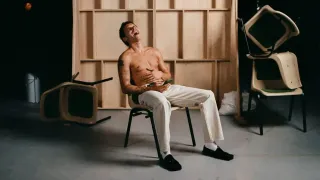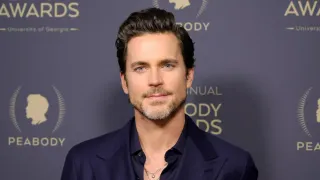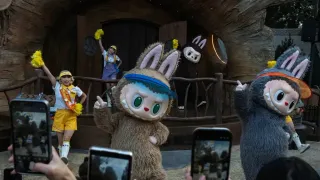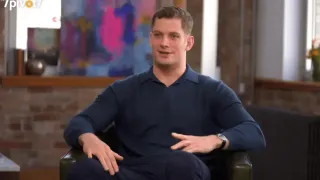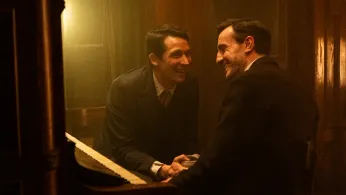
Sep 11
Movie Review: Paul Mescal, Josh O’Connor Collect Folk Songs in Tender ‘The History of Sound’
Lindsey Bahr READ TIME: 3 MIN.
If the algorithm was overseeing casting for a tender, queer romance, it’s likely that at least one combination would involve Paul Mescal and Josh O’Connor. They are two of Hollywood’s most promising next generation stars, and, not insignificantly, internet boyfriends who have captured the popular imagination on and off screen.
The new film “The History of Sound” does indeed find Mescal and O’Connor in a romantic affair. But it is not remotely the stuff of “Normal People” meets “Challengers” fan fiction (thank goodness for that). It’s a silly thing to have to clarify, but posters, loglines, red carpet appearances and wild imaginations can sometimes give audiences a misleading idea about what a movie really is. In this case, “The History of Sound” is a lyrical meditation on fleeting first love and the questions that can follow and haunt for a lifetime.
Mescal is Lionel, a music prodigy from an impoverished Kentucky farm family whose talent lands him at the Boston Conservatory where, in 1917, he meets David (O’Connor) who happens to be singing a folk song that reminds him of home. It's a mystical kind of meet-cute, in which all sounds evaporate as Lionel floats over to this magnetic person. David, however, is from a different world than Lionel, the product of a wealthy Newport family stricken by tragedy and death. And yet despite all the losses around, he has an undeniable lightness to him and a charisma that Lionel, and most who meet him, find intoxicating. Despite their ivory tower surroundings, they’re both passionate about folk music. Though prewar America was not exactly a welcoming time for gay men, Lionel and David fall into an easy, intimate relationship, and the movie comes vibrantly, ever so briefly, to life.
“The History of Sound,” an adaptation of a short story by Ben Shattuck, was directed by Oliver Hermanus, whose deliberately languorous pacing is admirably restrained but can also veer into tedium. Part of that is surely intentional as it’s a film about Lionel’s longing and searching in the absence of David, who is cruelly (for us and Lionel) gone for a large part of the movie.
The two reunite for a bit, in Maine, on a quest to record folk songs. They wander around, sleep in tents and Lionel is once again in heaven. But David has changed a bit, and most of the important things go frustratingly unsaid. Between the Conservatory and Maine, David served in the war, in the trenches, but can’t quite bring himself to talk meaningfully about it, resorting only to the quips he has always relied on: “It was boring.”
Not long after, they’re separated again, and the camera keeps us stubbornly with Lionel who finds himself in some of the most beautiful places in the world, singing in a choir in Rome, or on a weekend away at his girlfriend’s family’s Downton-esque estate in England. And yet all he yearns for is to be in that tent, in Maine, with David by his side.
At its core, “The History of Sound” a memory piece, narrated by Chris Cooper, who plays an older Lionel still trying to make sense of it all. The filmmakers have said it’s about the idea that your first love is your greatest love, which is a thought so unspeakably sad that it seems only fitting for a folk song. Add to that a generation of men destroyed by war, and the repression of the time and it’s enough to make you crumble under the weight of it all.
The film, which runs over two hours, is building to a profound conclusion, a payoff for all the slow-paced and melancholy moments that preceded it. But it requires definite patience from its audience that it doesn’t necessarily earn just by existing. There’s a lot of talk about what makes folk songs great, that they’re the most “warm-blooded pieces of music” and are the songs of real people, not gods. Lionel explains at one point that they are “messy, human experiences,” “emotion in song,” “nothing fancy.”
“The History of Sound” does not feel like a folk song, however, just the inspiration for one.
“The History of Sound,” a Mubi release in theaters Friday, is rated R by the Motion Picture Association for “some sexuality.” Running time: 127 minutes. Two and a half stars out of four.

